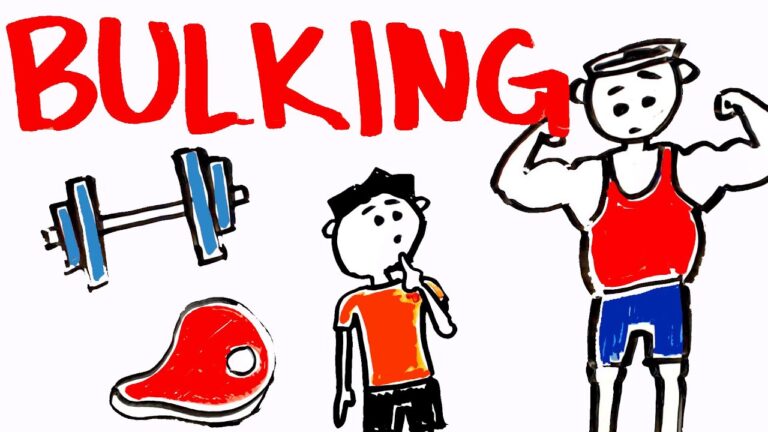
Feel the burn and take your fitness to the next level with sprinting! You'll torch up to 300 calories in just 3 minutes, accelerating fat loss and muscle gains. Embrace sprint interval training, alternating between explosive bursts and short recoveries. No fluff, just results as you boost your metabolism, sculpt your body, and elevate your endurance. Ready for a challenge? Mix up your sprints with hill runs or resistance training. Remember, proper form and dynamic stretching are key. Crush those workouts and redefine your limits. Want more intense, fat-burning strategies? Stay tuned and transform your body with unmatched effectiveness.
Main Points
- Sprint interval training maximizes fat burning through short, maximal effort bursts followed by active recovery.
- HIIT sprints torch up to 300 calories in just 3 minutes, enhancing fat reduction and calorie burn.
- Sprinting engages fast-twitch muscle fibers, promoting efficient fat burning and muscle building.
- Optimal training frequency includes 2-3 high-intensity sprint sessions per week to ignite fat-burning engines without overtraining.
- Proper warm-up, dynamic stretching, and sprint form are essential to maximize fat-burning benefits and prevent injuries.
Benefits of Sprinting
When you sprint, you engage fast-twitch muscle fibers that efficiently burn fat and build muscle. Imagine pushing yourself to the limit, feeling the adrenaline rush as your body becomes a lean, mean, fat-burning machine. Sprinting isn't just another workout; it's a ticket to freedom from stubborn fat and a sluggish metabolism.
Why settle for slow progress? With high-intensity interval training, you're not just running; you're exploding into action. Just 3 minutes of sprinting can torch up to 300 calories. That's right, in less time than it takes to scroll through your social media, you could be on your way to serious weight loss and muscle building. Think about the world-class sprinters with their lean physiques, brimming with muscle mass. That could be you.
Sprinting supercharges your cardiovascular fitness, making your heart stronger, your lungs more efficient. You're not just burning fat; you're transforming your entire body. Effective workouts like these are your secret weapon against mediocrity.
Why jog when you can sprint? Why aim for average when greatness is within reach? Lace up those shoes, hit the track, and unleash your full potential. Your future self will thank you.
Sprint Interval Training Basics
Ever wonder how you can maximize your workout efficiency in minimal time? Sprint Interval Training (SIT) is your answer. Imagine pushing your limits with all-out sprints, followed by generous rest periods. SIT involves short bursts of maximal effort, usually lasting up to 30 seconds, interspersed with 4-5 minutes of active recovery. This work-to-rest ratio, often set around 1:8, ensures you're burning calories, even while you rest.
Think about it—just 4-6 intervals can skyrocket your caloric expenditure and drive significant fat reduction. The intensity of these all-out sprints isn't just for athletes; it's for anyone willing to push beyond their comfort zone. You're not just running; you're sculpting your body, shedding weight, and enhancing your cardiorespiratory fitness.
Why settle for moderate when you can achieve more in less time? Research shows SIT might even outperform traditional HIIT in reducing skinfolds, body weight, and BMI. It's not just a workout; it's a game-changer.
HIIT Sprints Explained
Incorporating HIIT sprints into your workout routine means you'll alternate between short bursts of maximum effort and longer recovery periods to boost both calorie burn and cardiovascular fitness. Imagine pushing your body to its limits, feeling the power in every stride, your heart racing as your fast-twitch muscle fibers engage. This is the freedom you crave—breaking away from the mundane, embracing the intensity.
HIIT sprints are your secret weapon for fat loss and muscle building. In just 3 minutes, you can torch up to 300 calories. That's efficiency at its finest. Why spend hours on the treadmill when you can achieve more in less time? Your body becomes a calorie-burning furnace, not just during the workout but even after.
Feel the burn, embrace the challenge, and watch as your cardiovascular fitness soars. You'll sculpt a lean, defined physique, far from the monotony of traditional cardio.
Are you ready to unlock your potential, to push past boundaries and seize control of your fitness journey? HIIT sprints are your path to liberation, an intense and exhilarating ride to your ultimate self.
Get out there and sprint!
Sample Sprint Workout
Are you ready to push your limits and feel the burn?
Start with a solid warm-up to get your muscles primed, then hit those 30-second sprints with everything you've got, using the 4.5-minute recovery to catch your breath and prepare for the next round.
Finish with a cool-down to help your body recover and maximize the benefits of your intense effort.
Warm-Up and Cool-Down
Starting your sprint workout with a proper warm-up and ending it with an effective cool-down can significantly enhance your performance and reduce the risk of injuries. You don't want to start cold. Begin with light jogging, just to get your blood pumping. Follow it up with dynamic stretches to loosen those muscles. This combination will prevent injuries and improve performance, setting you up for an explosive sprint workout.
Why risk it? Warming up isn't optional; it's essential. You're not just preparing your body, you're gearing up your mind. Feel the liberation as your muscles wake up, ready to conquer the track.
After you've given your all, the cool-down is your saving grace. Slow jogging or walking starts the recovery process. It's your moment of triumph, allowing your heart rate to gradually return to normal. This helps reduce muscle soreness and aids in recovery, making sure you're ready for the next challenge.
Don't skip these steps. Embrace the freedom that comes from a well-oiled machine, from a body that responds with power and resilience. Warm-up, cool-down, and own your sprint workout. You're unstoppable.
Interval Timing Strategies
Maximize your sprint workout by alternating 30-second all-out sprints with 4.5 minutes of recovery. This interval training strategy isn't just about running; it's about pushing your limits and unlocking real freedom in your fitness journey.
Feel that rush of high intensity, knowing each sprint torches calories and drives fat loss like nothing else.
Why settle for mediocre results? With a work-to-rest ratio of 1:8, you're not just working hard; you're working smart. Each 30-second burst demands everything you've got, while the 4.5-minute recovery lets you recharge, ready to hit the next sprint with full force.
This method optimizes calorie burn and keeps your metabolism firing long after you've stopped moving.
Imagine the benefits: improved cardiovascular fitness, a metabolism boost, and a leaner, stronger you. Sprint workouts don't just shape your body; they build resilience, discipline, and power.
Are you ready to feel that surge of energy? To see the fat melt away, revealing the muscle beneath?
Stop wasting time with workouts that don't deliver. Dive into these high-intensity intervals, embrace the burn, and watch your fitness soar. Your path to freedom starts now.
Dynamic Stretching Routine
Before sprinting, incorporating a dynamic stretching routine can significantly enhance your flexibility, range of motion, and overall performance. You want to sprint faster, harder, and without injury, right? Then dynamic stretches are your ticket to success. These active movements, like leg swings, arm circles, and lunges, get your muscles warmed up and ready for explosive movements.
Do you know what happens when you skip this step? Your muscles stay tight, your performance drops, and you risk muscle strain. But when you take just 5-10 minutes to perform dynamic stretches, you activate your muscles, prepare your body, and set yourself up for success.
Here's a quick guide to get you started:
| Dynamic Stretch | Benefit |
|---|---|
| Leg Swings | Improve hip flexibility |
| Arm Circles | Enhance shoulder range |
| Walking Lunges | Boost leg muscle activation |
| High Knees | Prepare for explosive sprints |
Imagine the freedom of running without limits, feeling your body respond with power and agility. That's what a proper dynamic stretching routine offers you. So, take control, warm up right, and watch your sprinting performance soar. Ready to feel the difference? Start stretching now!
Optimal Training Frequency
You've got the power to transform your body, but it's all about finding the right balance.
Push hard with high-intensity sprints 2-3 times a week, and you'll ignite fat-burning engines without burning out.
Are you ready to maximize your results and avoid the pitfalls of overtraining?
Balance Rest and Activity
Striking a balance between rest and activity is key to achieving optimal training frequency for high-intensity workouts. You need rest to prevent overtraining and ensure muscle repair. Without proper recovery time, your body can't rebuild stronger, and you risk injury. So, how do you find that sweet spot?
Aim for 2-3 sprint sessions per week. This frequency maximizes the metabolic benefits while giving your muscles the time they need to recover and grow.
Every sprint session pushes your fitness levels higher, but only if you respect the balance. Too much activity without enough rest, and you hit a wall. Fatigue sets in, and your performance drops. You don't want that. You want each workout to count, to push you further toward your goals. Listen to your body. Feel the burn, then let it heal.
Think of rest as a weapon in your fitness arsenal. It's not about taking it easy; it's about strategic recovery to hit your next sprint harder and faster. Consistent training, balanced with adequate recovery, keeps your metabolism revved up and your progress on track.
Are you ready to unleash your potential? Find your balance, and sprint toward your freedom.
Avoid Overtraining Pitfalls
To sidestep the common pitfalls of overtraining, aim to keep your high-intensity interval training (HIIT) sprints to just 2-3 sessions per week. You don't need more; your body craves balance, not burnout. Recovery days? They're your secret weapon, allowing your muscles to adapt and grow stronger. Overtraining isn't a badge of honor; it's a fast track to injury.
Stay sharp by monitoring your progress and adjusting intensity as needed. Feeling like a superhero one day? Crank it up. Struggling the next? Dial it back. Your journey is yours alone, and only you can find that perfect rhythm.
Here's a quick guide to keep you on track:
| Training Frequency | Recovery Focus | Monitoring Progress |
|---|---|---|
| 2-3 times/week | Essential rest days | Track intensity |
| Consistent schedule | Muscle repair | Adjust as needed |
| Avoid burnout | Mental refresh | Prevent injuries |
Why push beyond your limits when you can achieve amazing results by working smarter? Want to prevent burnout? Embrace those rest periods like a champion. HIIT sprints are powerful, but only if you respect the balance. Ready to transform? Stick to the plan, listen to your body, and unleash your potential. Your freedom awaits—go claim it!
Progressing Your Workouts
When progressing your sprint workouts, gradually increase the number of intervals or reduce rest periods to continually challenge your body. You want to break limits and see real results, right? Start by adding an extra sprint interval each week or cutting down your recovery time. This way, you're constantly pushing yourself to improve sprint speed and endurance.
Track performance metrics like your sprint times and heart rate. These numbers don't lie—they'll show you exactly where you stand and how far you've come. Want to keep things exciting? Mix in variations in sprint workouts. Try hill sprints for that extra resistance or add in some resistance training. Variety isn't just the spice of life; it's the key to keeping your body guessing and your fat-burning optimal.
Don't forget, recovery is as important as the sprints themselves. Without proper recovery, you're inviting overtraining, which can derail your progress. Listen to your body; it knows when to push harder and when to rest. You're not just sprinting for the sake of it—you're sprinting to transform yourself. So, challenge yourself, track your gains, and keep moving forward. Your best self is just a sprint away!
Proper Sprinting Form
Mastering proper sprinting form is essential to maximize your speed and minimize the risk of injury. You've got the power to run faster, but it starts with how you move. Keep your arms at a 45-degree angle; this helps propel your body forward efficiently. Novice sprinters, push yourself to 90-95% of your maximum effort—feel that intensity surge through you. But before you hit the ground running, always do a proper warm-up. It's a must to prevent injuries and ensure you're performing at your peak.
For beginners, start with 5 sprints, allowing 75 seconds of rest between each one. This builds endurance without overworking your body. Consistent practice of proper form not only boosts your speed but also your efficiency—making every sprint count.
| Key Element | Importance |
|---|---|
| Arm Angle | Maintain 45 degrees to propel forward efficiently |
| Maximum Effort | Aim for 90-95% to challenge yourself |
| Warm-Up | Crucial to prevent injuries and perform optimally |
| Sprint Count | Start with 5 sprints for building endurance |
| Consistent Practice | Enhances speed, efficiency, and reduces injury risk |
Don't just run—sprint with purpose, power, and precision. It's time to break free and unleash your full potential!
Indoor Vs. Outdoor Sprints
Choosing between indoor and outdoor sprints depends on your training goals and personal preferences. Are you ready to take control of your fitness journey? Let's dive into the benefits of each option and find what ignites your passion for high-intensity workouts.
Indoor sprints provide a controlled environment, ensuring consistent training conditions. You'll have access to precise speed and distance tracking tools, making it easier to monitor your progress and push your limits. Opting for indoor sprints can be particularly useful during harsh weather, keeping your routine uninterrupted.
But there's a wild side to outdoor sprints. Embrace the fresh air, the varying terrain, and the challenge of natural elements. This dynamic workout can enhance mental stimulation and keep you engaged with ever-changing scenery. Outdoor sprints demand adaptation and resilience, traits that will fuel your journey to burn fat and achieve peak performance.
- Controlled environment: Consistent training conditions and precise tracking
- Varying terrain: Dynamic challenges that build resilience
- Fresh air: A boost for mental clarity and engagement
- Uninterrupted routine: Indoor training offers weatherproof consistency
Alternative HIIT Workouts
Alternative HIIT workouts often provide the variety and adaptability needed to keep your fitness routine engaging and effective. Imagine the freedom to choose between HIIT sessions on indoor tracks, a stationary bike, or treadmill sprints. Your workouts can be tailored to fit your fitness levels, equipment availability, and personal preferences, making it easy to meet your individual needs and smash your goals.
Why stick to one routine when you can mix it up? Indoor tracks offer a controlled environment for those who thrive on running, while stationary bikes provide a low-impact option for intense cycling sessions. Prefer the comfort of your gym? Treadmill sprints are a fantastic alternative. Each option allows you to push your limits, ensuring you get the most out of every session.
Personal trainers can guide you, helping you set up outdoor sprints or teaching you how to modify your HIIT workouts for maximum efficiency. Whether you're a beginner or an advanced trainer, you can tailor your intervals, speed, and recovery periods to challenge yourself and improve performance.
Ready to take control and break free from monotony? Embrace these alternative HIIT workouts and redefine your fitness journey. The only limit is you.
Frequently Asked Questions
How Do I Stay Motivated for High-Intensity Sprint Workouts?
Set clear goals, mix up routines, and find a workout buddy. Use music or motivational cues to stay pumped, and reward yourself after challenging sessions. Keeping it fun and varied helps maintain your freedom-loving spirit.
What Should I Eat Before and After Sprinting?
Before sprinting, eat a balanced meal with carbs and protein 2-3 hours ahead, and a light snack like a banana or smoothie 30-60 minutes prior. Afterward, consume protein and carbs within 30 minutes to recover.
Are There Any Specific Supplements That Aid in Fat Burning With Sprinting?
You've hit the nail on the head! Caffeine, beta-alanine, creatine, green tea extract, and BCAAs can help boost fat burning and enhance sprint performance. With these, you're free to push your limits and achieve your goals.
How Can I Prevent Injuries While Sprinting?
To prevent injuries while sprinting, warm up and stretch properly, wear supportive shoes, increase intensity gradually, maintain good form, and listen to your body. Recognize signs of fatigue or pain and adjust your workout accordingly.
Can Sprinting Help Improve My Overall Cardiovascular Health?
Coincidentally, sprinting not only boosts your speed but also significantly improves your cardiovascular health. You'll feel more energetic, your heart will get stronger, and you'll enjoy the freedom of better endurance and reduced heart disease risk.
Conclusion
Ready to transform yourself like a modern-day Hercules? Sprinting isn't just a workout; it's your ticket to a leaner, stronger you.
Embrace the burn, push through the pain, and watch your body evolve. Don't just wish for change—run towards it! Lace up, hit the ground, and let every stride bring you closer to your goals.
Remember, greatness isn't given; it's earned. Are you ready to earn it? Your transformation starts now. Don't wait, sprint!







